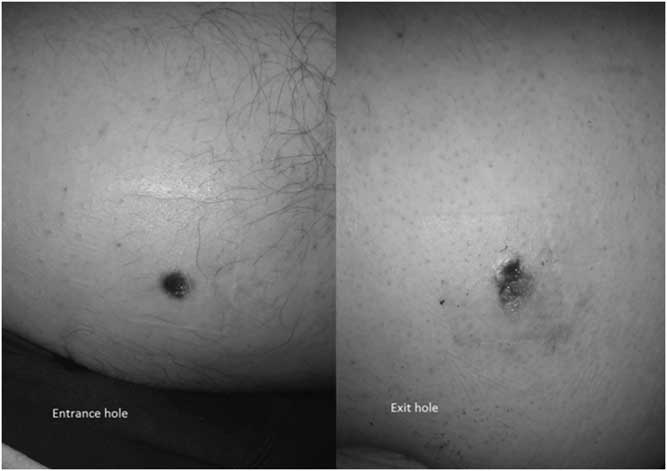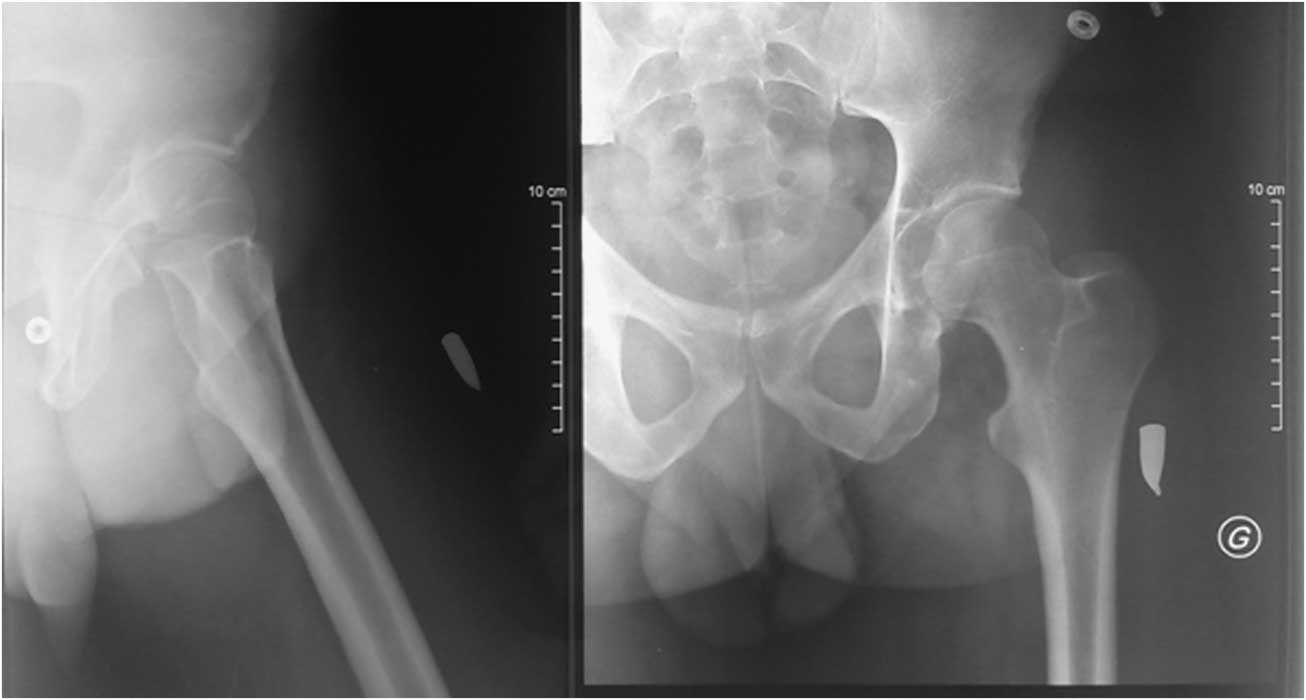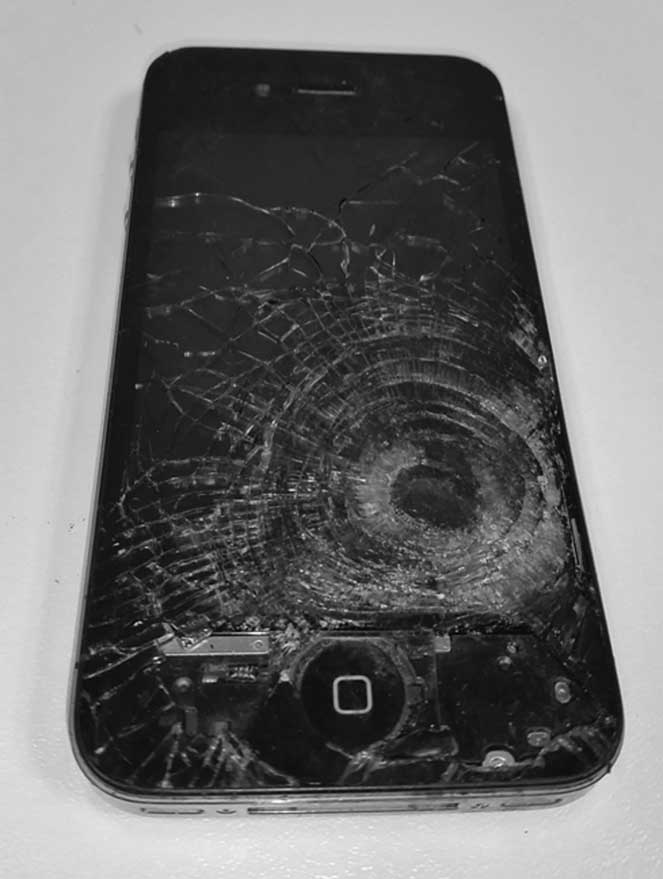Clinical Situation
This is a report of an unusual and fortunate story from the Paris (France) attack of November 13th, 2015.
The scene took place in the Bataclan Theatre. A young couple was listening to a hard rock band in the orchestra pit. Three terrorists burst into the place, shooting into the crowd with assault rifles type AK-47 (7.62 x 39 mm). The young man, 30-year-old (180 cm tall), tried bravely to protect his girlfriend, 29-year-old (160 cm tall), by intervening between a shooter and her body (Figure 1). He was hit by a bullet from a Kalashnikov rifle in the left buttock, and the couple fell to the ground.

Figure 1 Diagram of the Action.
The couple was transported to the emergency department. When they arrived, only the man was wounded. The girl was safe and she had no mark of injury.
Clinical examination showed a hemodynamically stable patient. There was one entrance hole at the external dorsal face of the buttock and one exit hole at the external front face of the thigh (Figure 2).

Figure 2 Entrance and Exit Holes.
X-rays were performed (Figure 3) and showed an absence of bone fractures, but the bullet was still in his thigh. It was surprising because the entrance and exit holes of the bullet were identified clearly.

Figure 3 Left Thigh X-ray Showing AK-47 Bullet.
At this moment, the patient showed doctors his Smartphone, which was in the left front pocket of his pants during the shooting (Figure 4). The main hypothesis was that the bullet penetrated his thigh and ricocheted off of his Smartphone before stopping in the medial portion of the fat tissues of the left thigh.

Figure 4 Smartphone with the Bullet Impact.
The patient benefited from an analgesic protocol based on Paracetamol and Codeine at the emergency department and from a primary disinfection of the wound. He also received Amoxicillin-Clavulanate. Eight hours later, once the most severe patients had been taken care of, he was brought to the operating room. Under general anesthesia, the surgeon explored the wound, cleaned it again, and practiced a debridement of contused tissues in order to avoid secondary necrosis which could lead to superinfection. The nurse put an absorbent alginate dressing on every day and a progressive good local healing was noted. It is important to note that he also benefited from psychological support. The patient could go back home six days later and his satisfactory wound healing was controlled the following week during a surgical consultation.
Discussion
Many authors report atypical bullet trajectories.Reference Thabouillot, Perrier, Roche, Agard, Barbier, Martin, Viant and Leclere 1 – Reference Aygün and Tulay 3 It is frequent to notice unusual courses. It is well known that bullets can rebound against bones, pivots, tip-overs, or fragments, generating severe internal injuries.
The main predictive factor of severe wounds is obviously the wound location but, when a non-vital area is wounded, it is the energy transfer and the fragmentation risk of the bullet which have to be considered.Reference Aygün and Tulay 3 Bullets from Kalashnikov rifles are classified as high-velocity missiles (>609.6 m/s).Reference Reginelli, Russo, Maresca, Martiniello, Cappabianca and Brunese 4 Kinetic energy is approximately of 2250 J.Reference Reginelli, Russo, Maresca, Martiniello, Cappabianca and Brunese 4
AK-47 bullets are known to cause severe wounds, but they also have rectilinear trajectories, low risk of fragmentation, and low rocking movement risk.Reference Reginelli, Russo, Maresca, Martiniello, Cappabianca and Brunese 4 If the young man had not had his Smartphone in his pocket, it seems very probable that the bullet would have penetrated the thigh and then ended its trajectory in the abdomen or the pelvis of his girlfriend (because of the height difference between them), generating a life-threatening injury for her. In this case, it can be said that the young woman owed her life to the bravery of her boyfriend and to his Smartphone.
Nevertheless, if it can be said that the Smartphone saved the life of the patient’s girlfriend, the rebound could have killed him also. If the bullet had severed an artery of the inguinal region, gravity, prognosis, and treatment would have been totally different.Reference Dorrzapf 5 , Reference Ahanger, Wani and Lone 6 Indeed, a lot of military doctors and nurses know that massive bleeding due to an arterial wound can be life threatening in a few minutes.Reference Samokhvalov, Reva, Denisov, Ozeretskovskiĭ and Pronchenko 7 Moreover, the rebound could have led to a thighbone or pelvis bone fracture.






